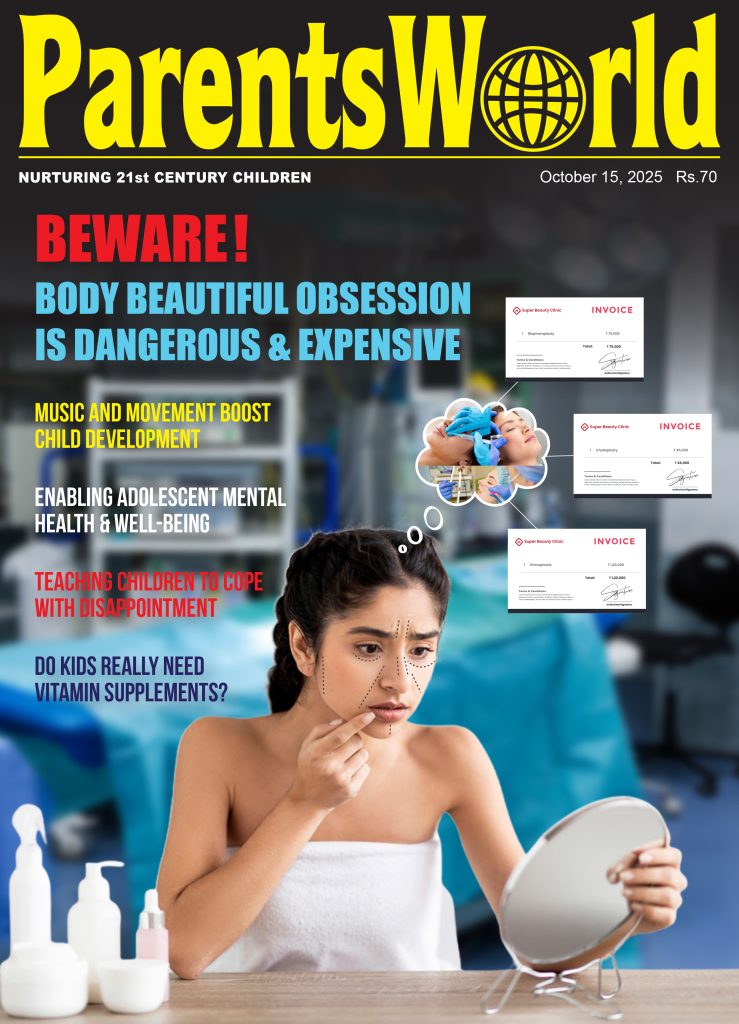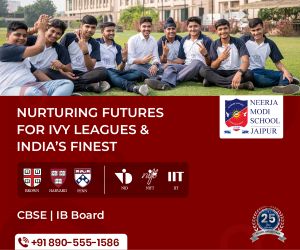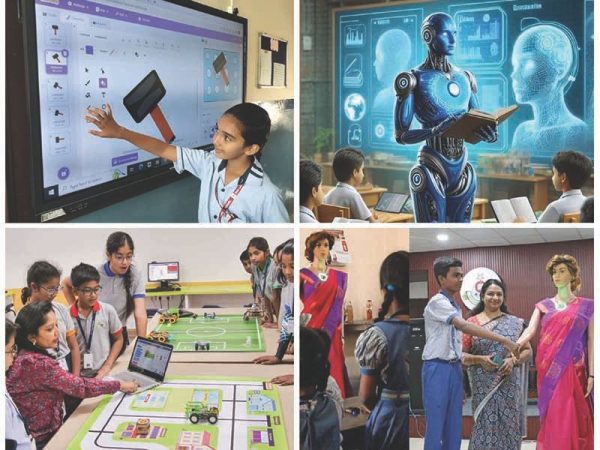Reimagining Engineering Education
– Dr. Lalit Narayan, VP & Sr. Dean – Academic Affairs (Academic Design, Development & Assessment), Medhavi Skills University, Sikkim
It was a humid July afternoon in Kanpur when a young mechanical engineering student entered a midsized manufacturing company’s workshop for the first time. Until then, her world had revolved around lectures, textbooks, and exams. But welding seams, debugging motors, and engaging with real machines that week, she discovered the difference between knowing theory and applying it.
Her experience underscores a larger truth: in the age of AI, automation, and human-centric manufacturing, engineering education must move from being theory-heavy to practice-driven.
The Value of Apprenticeships: Theory lays the groundwork; practice develops the skillset. The number of apprenticeships being undertaken in India today demonstrates this metamorphosis. As of June 2025, there are over 852,376 apprentices in training through the National Apprenticeship Promotion Scheme-2 (NAPS-2), of which 23 percent are women.
It is in experiential learning where we notice real impact. College and university apprentices in civil engineering and electrical engineering facilitate the connection of classroom diagrams to industry through learning at a construction site, weighing safety regulations against construction timelines. An apprenticeship is a significant exposure which helps students evolve from a learner to a professional.
Embedding Learning into Real Work: Engineering education cannot afford to operate in a vacuum, and therefore, education must share co-design responsibilities with the industry. For example, many higher education institutes (HEIs) pan India are working with the local governments to establish Apprenticeship Embedded Degree Programs (AEDPs) across disciplines to integrate engineering education with work-based training for earning academic credits.
Another example constitutes collaboration between ITI and Tata Motors that has now implemented features such as automobile engineering, where students can run CNC machines, calibrate engines, and comprehend production restraints. The point is, these connections yield truly relevant learning, and this is reflected in a job-ready, innovation-ready graduate.
Smarter Learning: Technology is changing the way engineers learn. Students in India’s computer science and electronics engineering programs can now access Remote Experiments and be part of IIT Delhi’s Virtual Labs project in subjects ranging from circuit design, robotics, and signal processing. For students in aerospace, they are utilising AI simulations to test their aerodynamic models virtually prior to wind tunnel testing – reducing cost and risk.
The NEP 2020 pushes for opportunities provided through these adaptive platforms which are not intended to replace shop floor training, rather complement it – in order to make learning scalable, safe, and personalised.
Flexibility & Skills First Framework: The New Education Policy (NEP) 2020 gives structural flexibility to embed innovations into curricula. Its emphasis on multidisciplinary and modular courses allows chemical engineering students to combine lab research with industry internships while receiving credit for the same.
Similarly, Centers of Excellence in frontier technologies like AI, renewable energy, automation, and biotechnology strengthen both faculty expertise and research depth, ensuring that degrees remain not just theoretical frameworks but skill-integrated experiences.
Collaborative & Sustainable Industry 5.0: As we move from automating processes in Industry 4.0 to collaborating with machines in Industry 5.0, the themes of sustainability and social value are influencing the design, use of systems, and practice of engineering. Environmental engineers need to embed renewable and sustainable practices within urban planning.
Engineering and education need to mirror the new reality. They must integrate robotics, automation, and analytics with design thinking, ethics, and human-machine interaction. Future engineers will work to create systems that are socially and environmentally conscious, inclusive and equitable, and economical and efficient.
Barriers and Incentives: Challenges remain, many rural & semi-urban institutions lack adequate capacity and equipment, rural students continue to face barriers from the digital divide, and a significant number of faculty members require retraining. But the favorable policy environment is strong. In May 2025, the Central Apprenticeship Council announced an increase of 36 percent in stipend funding through NAPS/NATS, encouraging apprenticeships as an option for students from very low-income or modest family backgrounds.
Torwards a Skills-First Future: Ultimately, the best engineering education fosters the capacity for innovation, adaptation, and problem-solving rather than memorization of formulas. Competency must be the standard for all engineers, whether they are software developers creating robust systems, civil engineers planning climate-proof infrastructure, or mechanical engineers optimizing manufacturing systems.
Currently, engineers have access to properly structured, credible micro-credentials via government-sponsored portals like the Skill India Digital Hub (SIDH), SWAYAM, NPTEL, and the National Institute of Electronics & Information Technology (NIELIT). On top of this, short-term courses provided by edtech platforms further support the availability of stackable credentials in niche domains. Cumulatively, these options build flexible learning pathways in which one may continue to develop competencies beyond the confines of traditional classrooms, at rates that are tailored to his or her professional and personal circumstances, in direct alignment with job requirements.
It is imperative that engineering education be reconceptualized to embrace a skills-first approach in order to prepare India’s talent for an atmanirbhar Bharat and a smarter, sustainable world.
Also Read: Teaching engineering in Hindi boosts student performance: IIT Jodhpur director
















Add comment